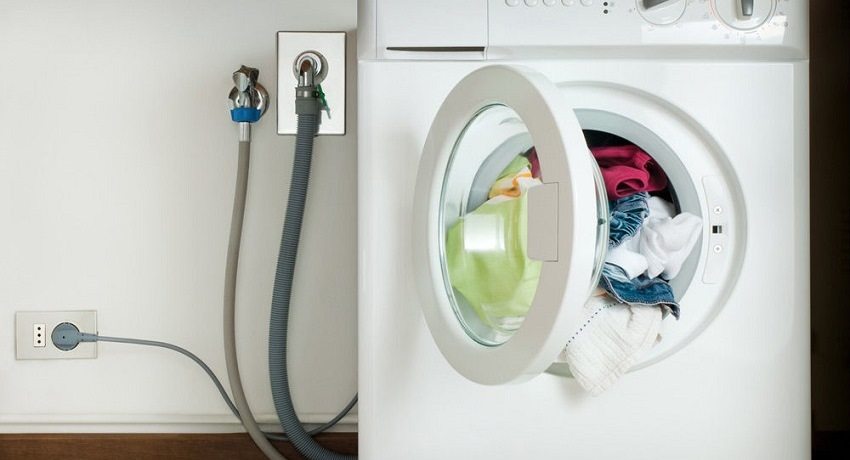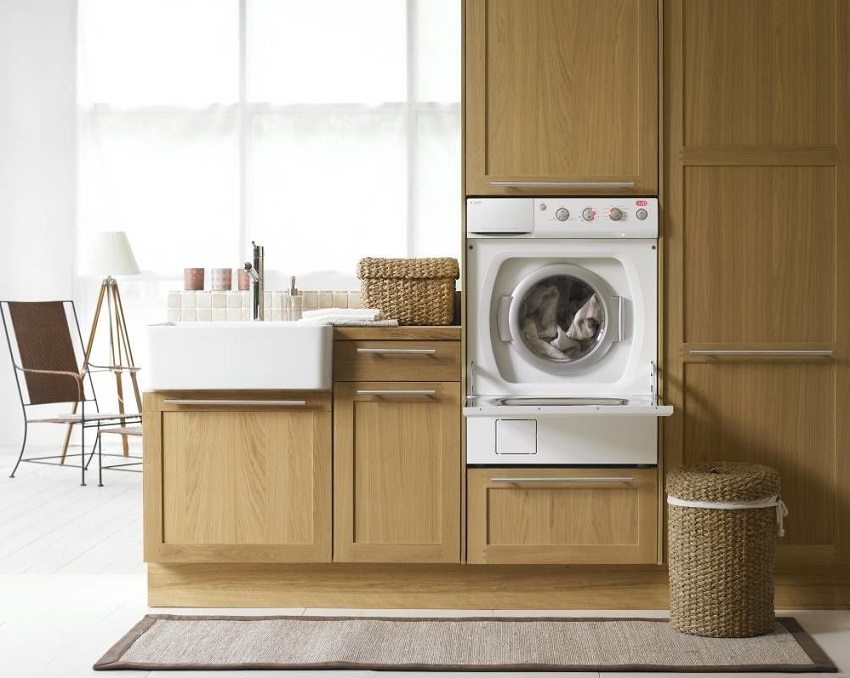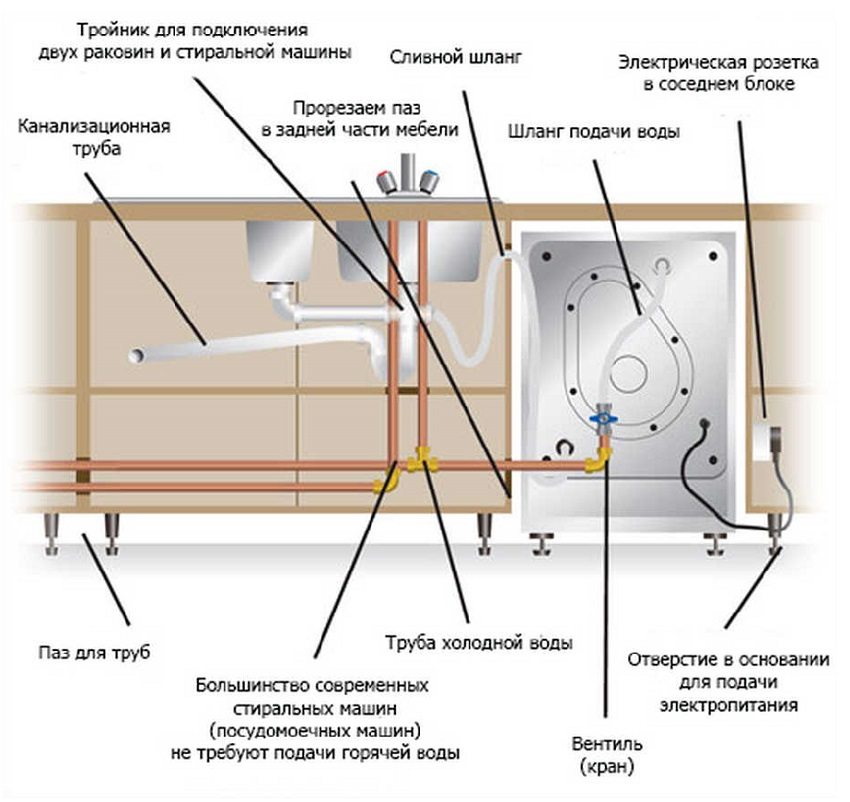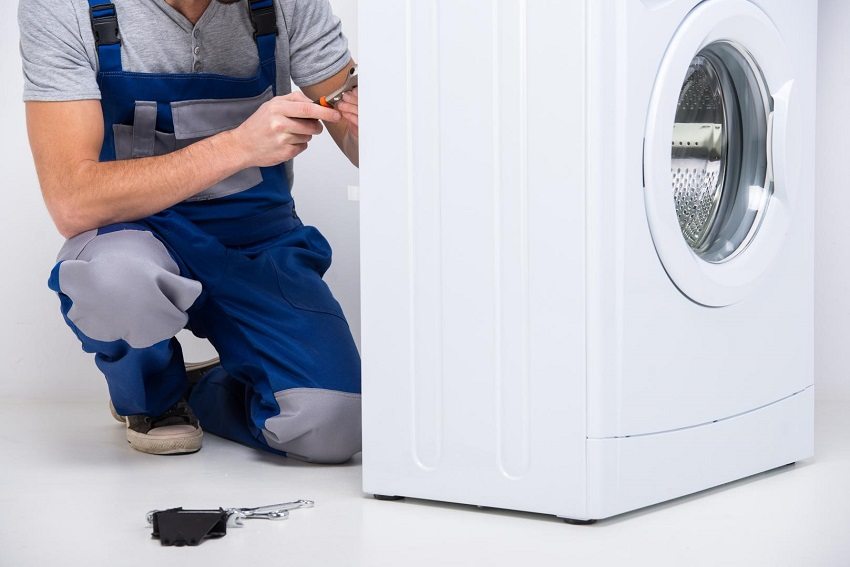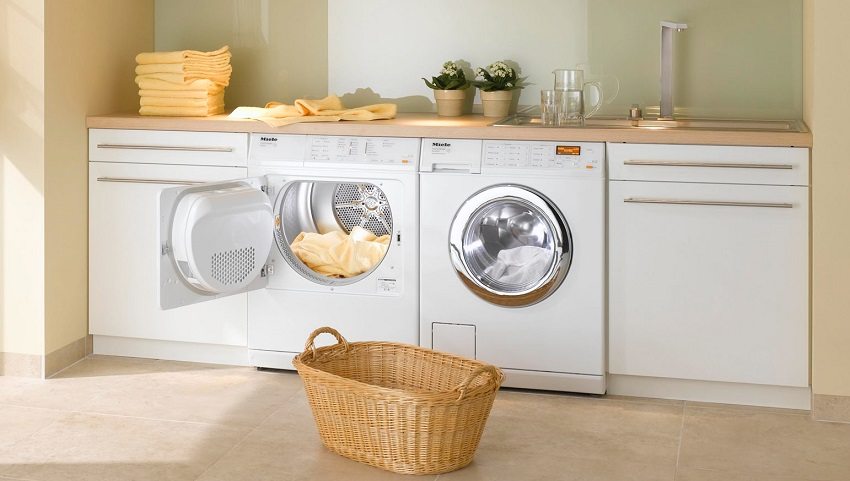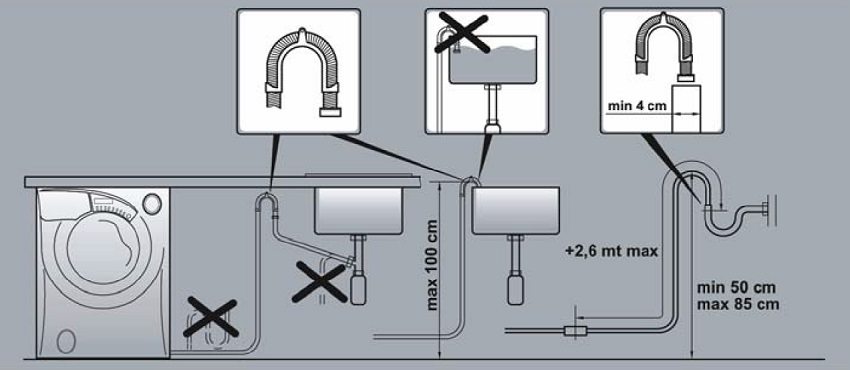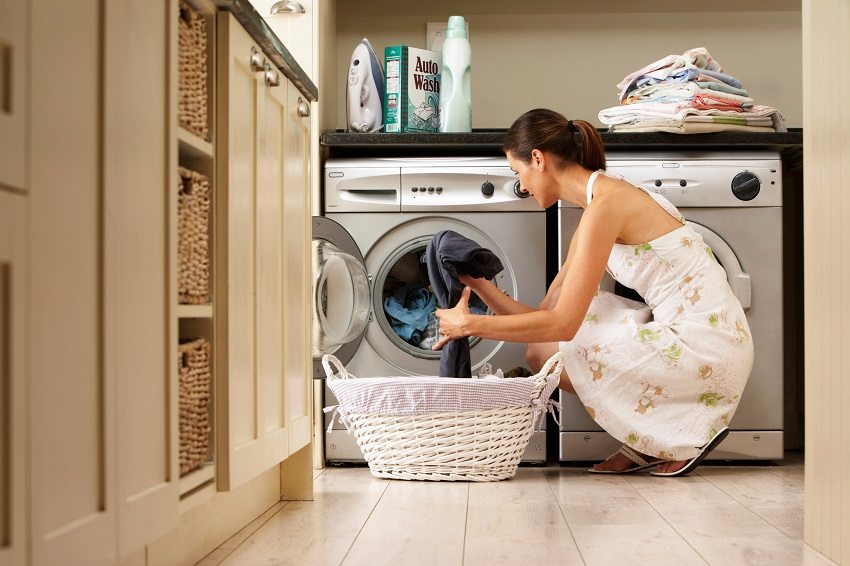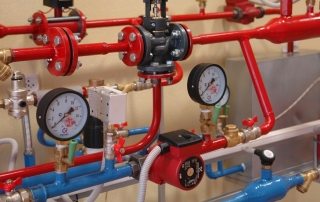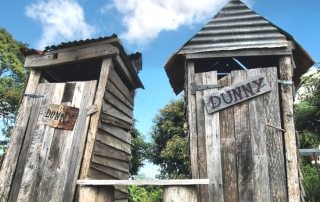In order not to make a mistake when connecting the washing machine, you must first read the instructions for its installation. Manufacturers usually indicate various subtleties that are inherent in a particular model. After reading the installation and operation manual, observing the basic rules, you can connect the washing machine to the water supply and sewerage system without assistance.
Content [Hide]
Choosing a location for installation
Correct installation and adjustment of the washing machine is a guarantee of long and trouble-free operation of the equipment. The choice of a place for a washing machine should be taken quite seriously. The machine is usually installed in the immediate vicinity of communications. There should be a sewerage and water supply nearby. Therefore, the best places for such a technique are usually considered:
- bathroom;
- kitchen;
- restroom.
The bath is standard. Most consumers try to install such household appliances there, often placing the machine under overhead water lily sink... But the small areas of rooms in old buildings often do not allow to accommodate fairly large machines, therefore, kitchen rooms and toilets are used for these purposes. There are other accommodation options. In the absence of the required area, the washing complex is installed even in hallways, bringing communication lines there.
Connecting the washing machine to the water supply and sewage system: the main stages
Well, the long-awaited machine has been bought, the packaging has been removed, now you need to remove the special shipping parts. You also need to remove additional fasteners securing the drum of the machine. After removing the bolts, all the resulting holes are closed with plugs supplied in the kit. After carrying out such events, you can proceed directly to the connection.
Important! It is strictly forbidden to switch on the machine before removing the transport fasteners. This could damage the drum and damage all equipment.
Sewer connection
There are several connection features washing machines to water supply and sewerage. They may depend on the type of similar household appliances:
- If the washing machine does not have a check valve, which should allow water to pass only in one direction, then the level of the outlet hose is indicated in the instruction manual. Typically, the branch pipe should not be higher than 50 cm.
- To connect the machine, you will need to purchase an additional sewer siphon... The outlet hose is then connected to the drainage system of the sink above the knee. This connection option completely eliminates the possibility of leaks.
- Similarly, the connection is made, if necessary, to the water drainage system from the bathroom. Where it is more convenient to do this depends on the location of the washing machine, and the location of the communications.
- The easiest way to arrange a drain into the sewer is to fix the drain tube on the edge of the sink or bathroom. But such a connection is absolutely not reliable.
- With any type of drainage arrangement, the outlet hose is attached to the rear wall, at a height of about 80 cm and must run without kinks or kinks.
The water can be drained directly into the sewer. If its thickness is from 5 cm or more, then a bend can be installed directly on it. For a better connection, use a rubber seal. But this method can be used as a temporary measure, since the waste water under certain conditions can flow back and an unpleasant smell will appear in the machine.
Important! When connected washing machine to the water supply and sewerage system, attention must be paid to the strength of the pipe fastening. In the absence of reliable fixation, all connections can lose their tightness, which will lead to leaks.
Water connection
The machine is connected to water using special hoses with a diameter of about 1.9 cm. Such a hose is connected at one end to the washing equipment, and the other to the water supply system. A shut-off valve must be present at the connection point so that it is possible to turn off the water supply at any time. Depending on what material the pipe is made of, where the connection is planned, the tie-in is made in different ways.
Metal water pipe
To connect the washing machine to the water pipe, you must first cut the valve. If the communications are made of metal elements, a special crimp sleeve is used for this. This two-piece piece is put on the pipeline and bolted tightly. The required hole is drilled straight through the coupling, and a tap is screwed onto the threaded outlet.
Related article:
How to install a pump to increase water pressure in an apartment. Classification of pumps for increasing the pressure in the water supply of an apartment, their choice and features of self-installation.
Reinforced plastic water pipe
If the supply of cold water to the room is carried out using metal-plastic pipes, then a special tee is required to connect the washing machine. In another way, it is also called a fitting. A piece of pipe is cut out in the right place, a tee is inserted into the opening and carefully sealed with rubber gaskets. Then the tap is connected.
Mixer connection
If you need to temporarily connect household appliances to water, you can connect it to the mixer. A tee is also used for these purposes. Similarly, you can connect together the water supply to the drain tank.
Connection without running water
There are times when there is no plumbing in the room, and you don't really want to give up the automatic machine.For example, in a summer cottage, where there is only a well or an ordinary water pump from the communications. In such a situation, it is also possible to ensure the operation of equipment. This requires a hose and a large water tank, which must be installed above the washing equipment. With this arrangement of water, the necessary pressure required for the operation of the built-in pump will be created.
Also available for purchase pumping station, which will supply water if necessary. But this method will require quite serious additional costs.
Electrical connection
Without electricity, no equipment will work, and helpers for washing are no exception. To operate the machine, you need a three-wire socket and a wire for grounding... If you need to use an extension cord, you should choose only one that has grounding elements. The best solution for connecting the machine is considered to be an outlet connected to a separate electrical machine.
Important! It is strictly forbidden to equip grounding on water, gas and other pipes, as well as heating radiators. This connection can be fatal!
Functional check
After connecting the washing machine to the water supply and sewerage system, it is necessary to check its functionality. First of all, all existing connections are reviewed, then a test run is carried out. Correct installation guarantees 100% fulfillment of the following points:
- the internal tank fills up pretty quickly to the required level;
- no leaks occur at the points of connection with the water supply and drain;
- after the cessation of the collection of water, after about 5 minutes, its heating begins;
- the rotation of the drum should be uniform;
- there are no extraneous noise during operation;
- the water is drained out quickly, without delay.
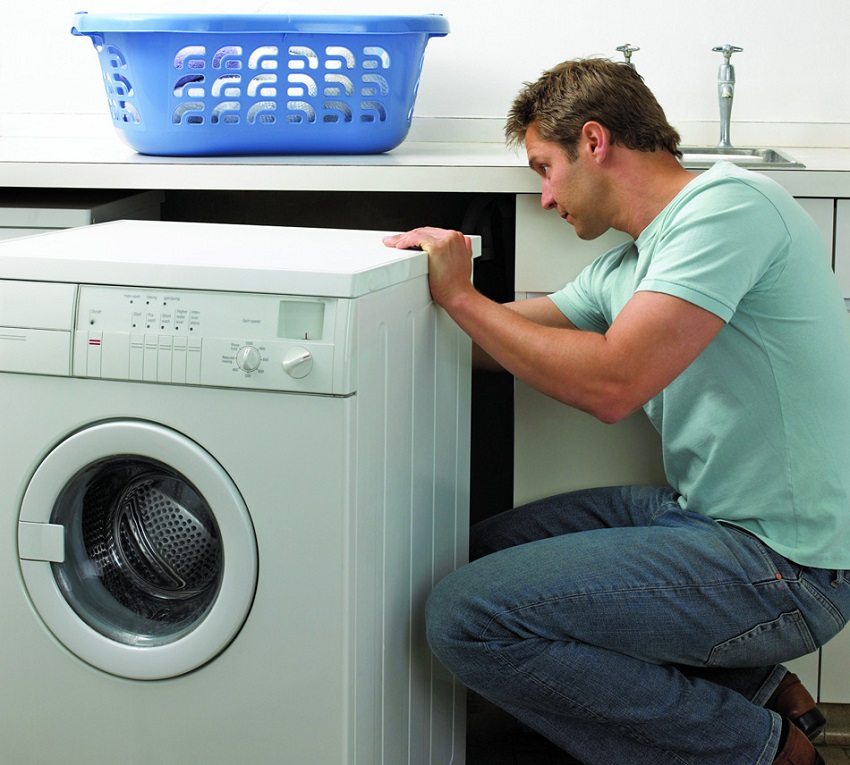
It is important to check the reliability of all connections when installing the washing machine in order to avoid leaks.
It is worth testing the operation of the equipment in all possible modes. This will allow you to eliminate the problems that arise in the early stages and avoid serious damage in the future. If malfunctions are still outlined: leaks have arisen or timely drainage does not occur, then you will have to start all over again. The machine must be disconnected from the mains, drain the water and re-check the correctness and thoroughness of all joints and tie-in points.
As you can see, connecting the washing machine to the water supply and sewerage system is not difficult. All used connecting elements are readily available in any plumbing store and do not require high costs. Observing all the listed rules and subtleties, as well as carefully studying the attached instructions, you can do such work yourself without unnecessary problems and calling professionals.
